Greene Square
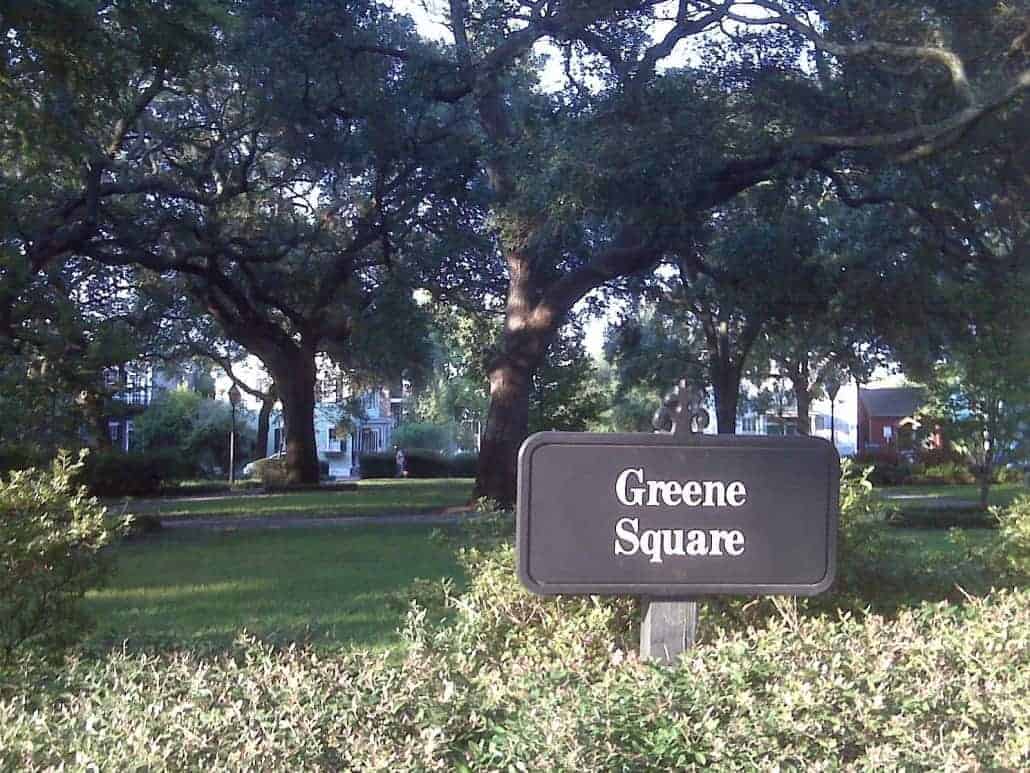
Greene Square was named in memory of the Revolutionary War hero, Nathaniel Greene. So great was Greene’s contribution to the war effort in Georgia that he was given a grant of land in gratitude for his service. Originally from New England, Mr. Greene moved his family to Savannah, only to die shortly following the move from heat stroke. In addition to the striking architecture, Greene Square is home to the Second African Baptist Church, and its long and vibrant history.
- THE SECOND AFRICAN BAPTIST CHURCH – The Second African Baptist Church has its origins in the early 1700’s, when slaves participated in worship with their white masters. In 1802, Henry Francis and Henry Cunningham were ordained as Baptist Ministers and together with a small group of followers, selected a site for the construction of what would become the Second Colored Baptist Church at 123 Houston Street. At that time Savannah had a significant number of free African Americans, and those with the financial means to provide support became some of the church’s early leaders.
- EMANCIPATION PROCLAMATION – By 1864, the church was 58 years old and playing host to Union forces that had entered the city with General William T. Sherman. The church could not contain the enormous crowd that gathered to hear the Secretary of War, Edwin Stanton, and General Sherman as they read the Emancipation Proclamation and freed the enslaved African Americans of Savannah. A plaque commemorating the event can be seen to this day in Greene Square.
- MARTIN LUTHER KING JR – Nearly a century later, in 1963, Martin Luther King Jr. visited the church and gave a thunderous sermon. He incorporated segments of what would become his famous “I Have a Dream” speech, clearly perfecting his historic words one month before the landmark “March on Washington.” After touring the square, turn south on Houston Street and then turn left onto Oglethorpe to Colonial Park Cemetery.
Green Meldrim House Tour
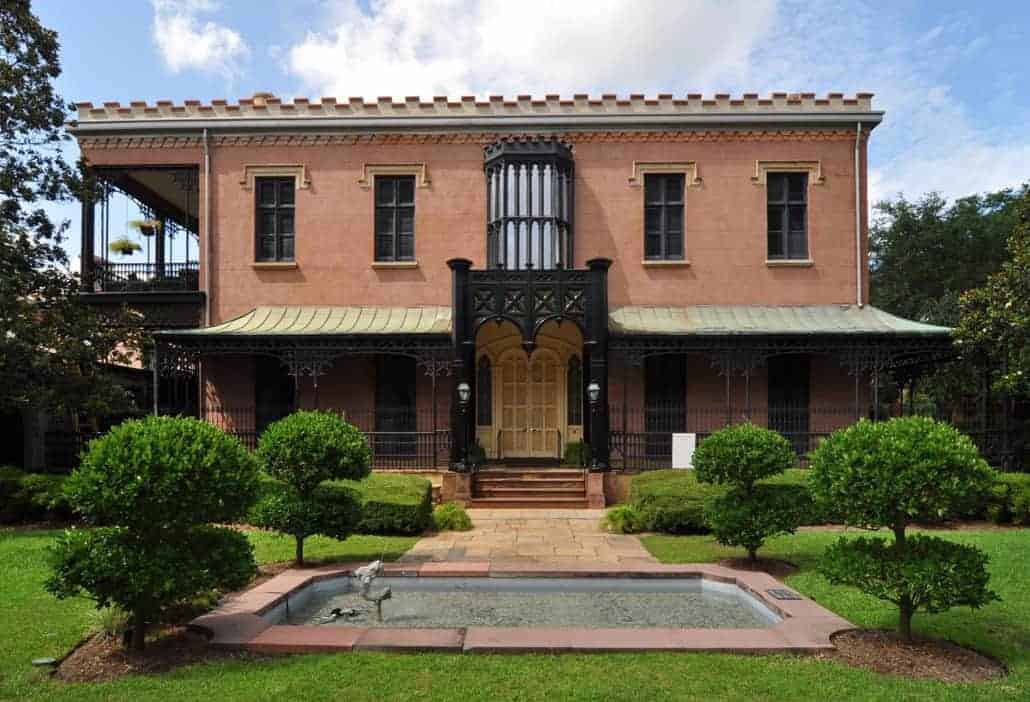
Notice: This house is operated by St. Johns Church and can be closed at any time for any reason for church related functions.
General William Tecumseh Sherman used the house as headquarters when the Federal army occupied Savannah during the Civil War, upon the invitation of Mr. Green. It was at this time (December, 1864) that General Sherman sent his famous telegram to President Lincoln offering him the City of Savannah as a Christmas gift. In 1976, the house was designated a National Historic Landmark by the United States Department of the Interior.
Mr. Green was not possessed of great wealth when he arrived in Savannah. He became a cotton merchant and ship owner. By 1850, he had amassed a fortune sufficient to build the most elaborate house in Savannah at a cost of $93,000. According to Green family records, $40,000 of the cost of the building materials including flagstones, laths, planks and bricks, were brought from England as ballast on Mr. Green’s ships. Recent restorations have revealed that the bricks were actually made at a foundry in Macon, GA. The Green-Meldrim House is one of the finest examples of Gothic Revival architecture to be found in the South. The house was constructed in the early 1850’s as the residence of Mr. Charles Green, an Englishman who came to Savannah in 1833.
The architect for the house was Mr. John S. Norris of New York. Mr. Norris was in Savannah from 1846–1861 and during that time he designed not only the Green-Meldrim House but also the Custom House and numerous other fine residences. There are many unusual architectural features throughout the house. The front entrance has three sets of doors. The heavy outer double doors fold in and form a small closet on either side of the entrance. Of the other two sets, one has glass panels to give light and the third set is louvered for ventilation.
Features:
The woodwork on the main floor is American black walnut, beautifully carved, and the elaborate crown mouldings or cornices are stucco-duro. The doorknobs, hinges, keyhole escutcheons and covers are silver plated. The hanging consoles in the hall have supporting brackets or carved wood, while the ornate aprons are of papier-mache
There are marble mantles in each room in the house, the two in the double drawing rooms being of Carrara marble. Other original adornments in these rooms are the matching chandeliers and the large mirrors in gold-leaf frames which were brought from Austria.
The graceful curved stairway with skylight above is a feature found in other houses designed by Mr. Norris. Also of special significance are the oriel windows on the east side of the house.
The Garden:
The covered porch, on three sides of the house, is surrounded by ornate ironwork. The planting in the garden is not authentic to the period of the house, but after the removal of layers of soil it is believed that the pattern of the original flower beds was discovered and has been restored. The former kitchens, servants’ quarters and stable have been converted into the Rectory of St. John’s Church.
History of Ownership:
The house has been owned by only two families and St. John’s Church. After the death of Mr. Green in 1881, it became the property of his son, Edward Moon Green. On July 14, 1892, the house was purchased by Judge Peter W. Meldrim. On December 30, 1943, the Meldrim family sold this historic treasure to St. John’s, thus ensuring its preservation.
Georgia State Railroad Museum
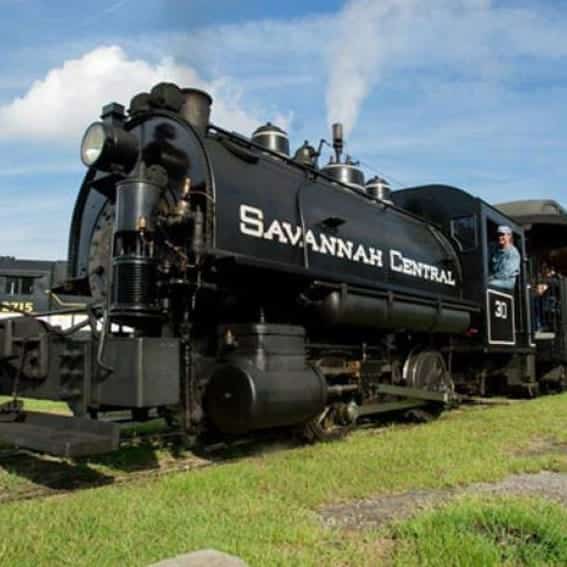
Georgia State Railroad Museum is a historic site featuring the most complete antebellum railroad of its kind in the world and is located at the old Central of Georgia Railway Savannah Shops and Terminal Facilities in downtown Savannah. The museum gives visitors the opportunity to engage in interactive experiences, such as participating on the handcar, touring the historic railcars and taking a guided site tour by train which showcases our museum’s fully operational turntable. Check our website for a complete schedule of the days our train is operating. Space is limited on the site tour by train and is first come, first served.
Franklin Square
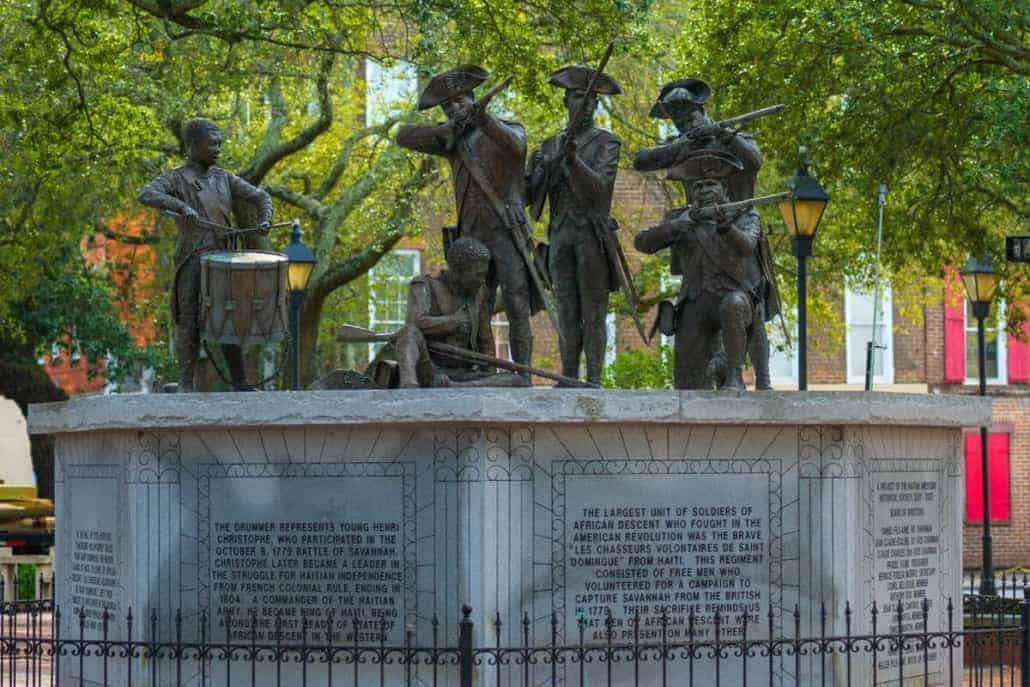
It was named for Benjamin Franklin, who served as Georgia’s agent in London from 1768 to 1775 in addition to his prominent role as one of the nation’s founding fathers. Established in 1790, Franklin square was home to Savannah’s water tower for many years, and this square was commonly referred to as “Water Tower Square,” “Water Tank Square,” and “Reservoir Square.” This square almost suffered the same fate as other Montgomery Street squares that were lost to development in the 1970’s, but was restored in the 1980s to commemorate the 250th anniversary of the founding of Georgia.
- HAITIAN VOLUNTEERS MEMORIAL – At the center of the Square, a monument honors the Haitian Volunteers, a unit of 500 free black men from Haiti who fought in the failed attempt to drive the British from Savannah during the Revolutionary War. Witnesses credited the Haitians with saving the French and American soldiers by providing cover for their retreat.
- THE FIRST AFRICAN BAPTIST CHURCH – Located on the west or far side of Franklin Square and was established by the oldest African American congregation in the United States. Built by the congregation, many of whom were slaves, between 1859 and 1861, the building is said to be the first building constructed of brick in Georgia and to be owned by African Americans. The church played an important part in Savannah’s history, providing a hiding place for runaway slaves traveling the Underground Railroad during the dark years leading to the Civil War, and playing a pivotal role as a center of activity during the Civil Rights Movement. The church still serves as an important place of worship today, and is the oldest continuously active African-American Church in North America. The church also houses a museum, which documents the church’s rich history, with documents and artifacts dating back to the 18th century.
Forsyth Park
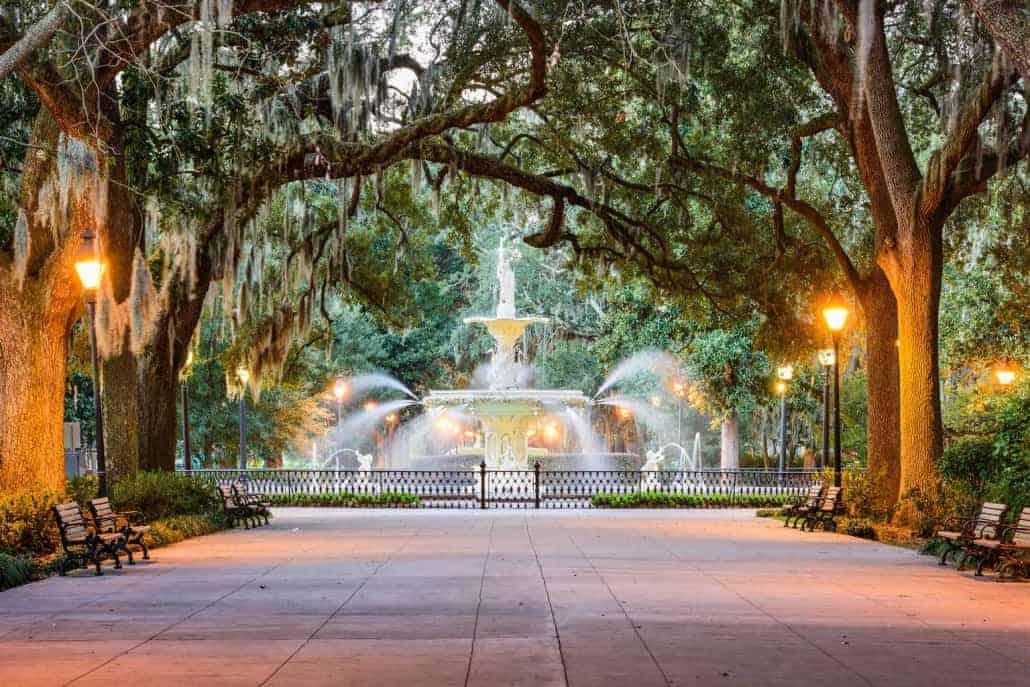
Forsyth Park is over 30 acres and was named after Georgia Governor at the time of the expansion in 1851, John Forsyth.
The park rests bordered by Park, Drayton, Whitaker, and Gaston streets, is home to the Confederate Memorial, a half shell theatre, tennis courts, basketball courts, a cafe, two playgrounds, and ample room for sports and events. However, people from all over come to see it’s most famous asset: the Forsyth fountain.
Modeled after the fountains found in Place de la Concorde in Cuzco, Peru, it was added to the North end of the park in 1858. Forsyth Park is home to the Farmer’s Market every Saturday, a site for concerts during the Savannah Jazz Festival, a host to free movies in the park every few months and the destination for all kinds of festivals and special events throughout the year.
But you don’t have to wait for an event to try it out. Bring a good book and a blanket, and spend a sunny afternoon under the shade of an oak tree.
Ellis Square
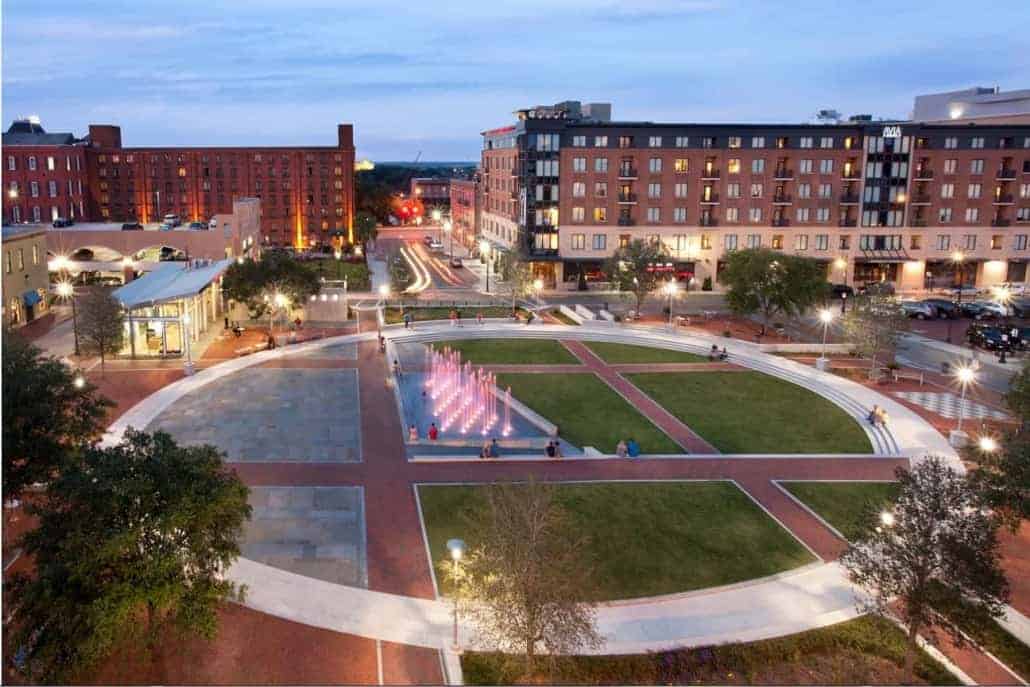
It was named after Henry Ellis, second Royal Governor of the Georgia colony. It was also known as Marketplace Square, as from the 1730s through the 1950s it served as a center of commerce and was home to four successive market houses. Prior to Union General Sherman’s arrival in December 1864 it was also the site of a slave market. In 1954 the city signed a fifty-year lease with the Savannah Merchants Cooperative Parking Association, allowing the association to raze the existing structure and construct a parking garage to serve the City Market retail project. Anger over the demolition of the market house helped spur the historic preservation movement in Savannah. When the garage’s lease expired in 2004, the city began plans to restore Ellis Square. The old parking garage was demolished in 2006 to make way for a new public square (park) that features open spaces for public concerts, as well as an underground parking garage. The restoration of the square itself, begun in the spring of 2008, was completed in February 2010. Ellis Square officially reopened at a dedication ceremony held on March 11, 2010. A bronze statue of songwriter-lyricist Johnny Mercer, a native Savannahian, was formally unveiled in Ellis Square on November 18, 2009.
Davenport House Museum
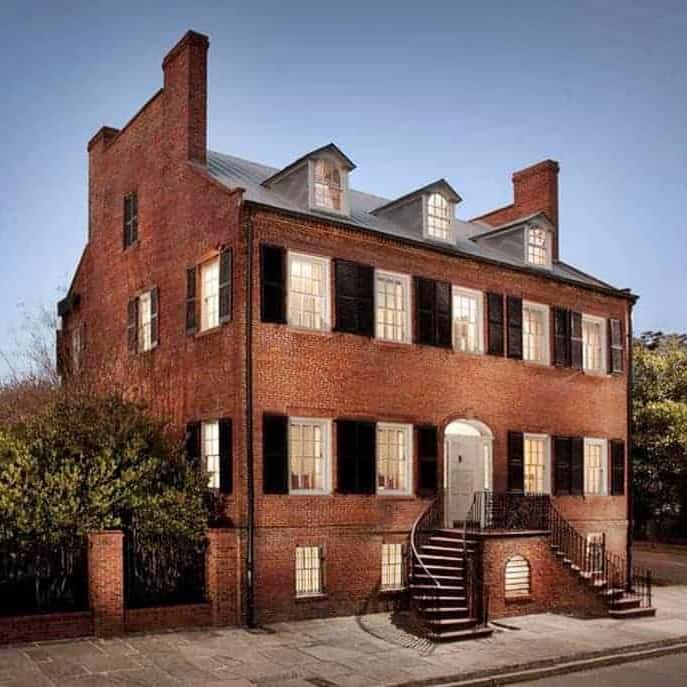
Tours start every 30 minutes (on the half hour), are limited to 12 people and last approximately 70 minutes.
The Isaiah Davenport House is one of the best examples of Federal-Style architecture in Savannah. The simple but elegant exterior was constructed of English brick and brownstone and features an ornamental iron railing and handsome double entry stairway.
The interior of the home has been authentically restored and features beautiful woodwork, original plaster-work and a hanging staircase. Filled with furnishings of the period, visitors are able to get a glimpse of what life was like in Savannah in the 1820s.
A native of Rhode Island, Isaiah Davenport, arrived in Savannah before 1807 after completing his apprentice as a builder. He soon became known as one of Savannah’s most famous and prosperous builders and built a number of brick houses in the late Georgian and Federal styles, all with high basements made necessary by the dusty unpaved streets of Savannah.
Davenport’s heirs sold the Davenport house to planter William E. Baynard in 1840, and remained in the hands of that family until 1955. Unfortunately, the house was a run-down tenement building by the 1930’s and destined for destruction in 1955 to make way for a parking lot. The historic home was saved by seven Savannah society ladies who raised $22,500 to purchase the home. This effort was the first act of the Historic Savannah Foundation, which would be responsible for saving and preserving many of Savannah’s historic sites.
Columbia Square
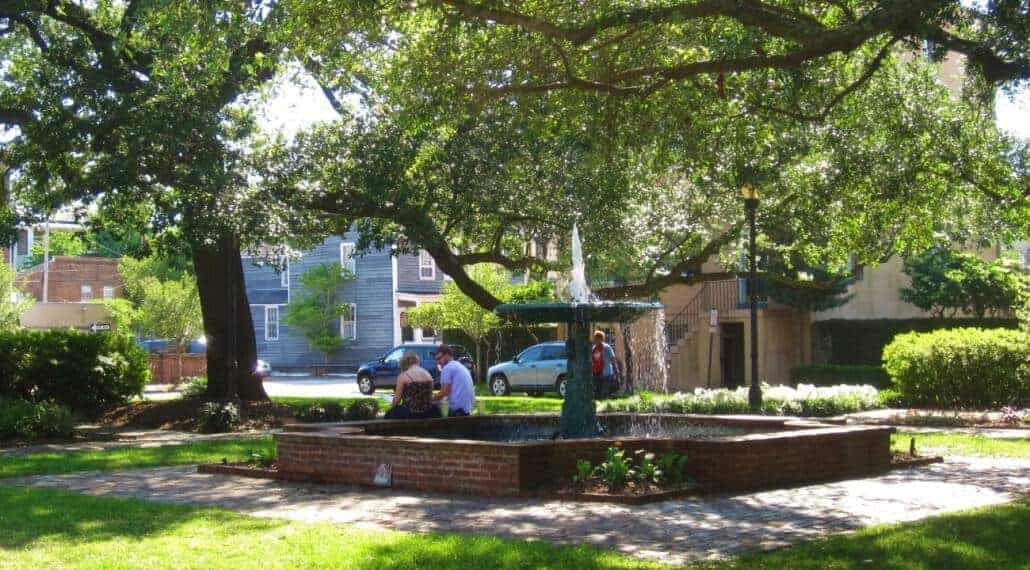
This square dates back to the heady days following the Revolutionary War. Laid out on Habersham Street in 1799, this square and many streets around it were given names that reflect the patriotic fervor of the time. Sadly, like many areas on the east side, Columbia Square had fallen into disrepair, and by the 1950s many of the homes in the area were at risk for demolition. It is here that the Savannah preservationist movement began, and the effects of this important work can be seen all around the square.
- KEHOE HOUSE – (West side of square) In addition to the square itself, the Historic Savannah Foundation has saved and restored many other important buildings, some of which are available for tours. The Kehoe House is truly a masterpiece of ironwork. Built in 1892 by William Kehoe, in 1892 the Kehoe House was an advertisement of sorts. Mr. Kehoe was a master ironworker and owner of the local foundry. He was often heard to boast that, If you can build it in wood, then I can build it in iron. All of the fine detail work is actually made of cast iron. The house was built to accommodate the large Kehoe family. It is said he had ten children, not including stillbirths or children who died in their infancy. After years as a private residence, the building served as a funeral home, and is now one of the city’s finest bed and breakfast establishments. The Kehoe House is yet another Savannah home that is rumored to be haunted by early inhabitants. The story most frequently told is of the young Kehoe twins who died while playing and somehow becoming trapped in a chimney. All of the fireplaces were blocked, and decorated with angels as a memorial. Several people have reported playful encounters with the spirits of the children.
- FOUNTAIN – The stately fountain that now occupies the center of the square is a reminder of how much work has gone into rehabilitating this area of the city. At one time the fountain graced the entrance to a large plantation outside the city limits. It was moved as a part of the work to revitalize the square in the 1970s.
- THE DAVENPORT HOUSE – (Northwest of square) This house was the first project of the Historic Savannah Foundation, which was founded by seven prominent Savannah ladies who were determined to save the home from the wrecking ball. Built in 1820 by master builder Isaiah Davenport, the home served as a showcase for the exquisite craftsmanship of Mr. Davenport and his crew. Sadly, Mr. Davenport was only to enjoy the home for seven years, until he succumbed to the Yellow Fever Epidemic that swept through Savannah in 1827.
Following the death of Mr. Davenport, his wife Sarah rented out rooms to boarders and it remained a boarding house for years after she sold the property. By the 1950s the house had become a tenement, and plans were made to demolish the building. Due to the dedication and resolve of the Historic Savannah Foundation, the home was saved, restored, and ultimately turned into a museum. It remains a museum today, and a second restoration effort in 2003 has fully returned the home to its original splendor.
Colonial Park Cemetery
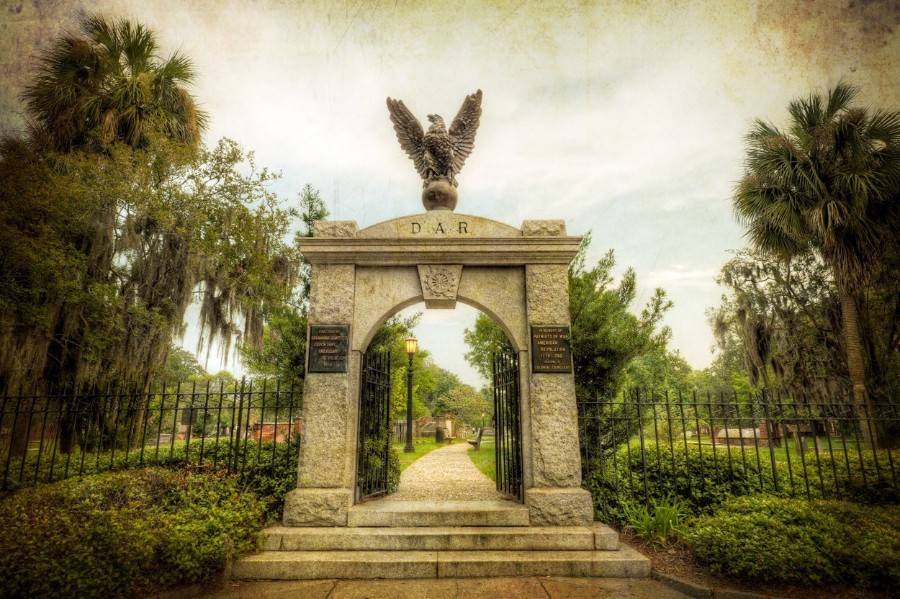
Colonial Park Cemetery was established in 1750. Having served as Savannah’s only cemetery for more than a century, the six-acre tract is the final resting place for more than 9000 Savannahians who died between 1750 and 1853. Like many cemeteries of the same age, Colonial Park has separate areas for the graves of Jews, Negroes, and “strangers.” Many graves are distinguished by special markers placed by the Georgia Historical Commission, which highlight an individual who had special historic significance.
- Button Gwinnet Grave – Perhaps the most famous person to be interred in Colonial Park is Button Gwinnet. A signer of the Declaration of Independence, Gwinnet was killed in a duel with General Lachlan McIntosh, who is also buried here.
- Yellow Fever Epidemic – It is estimated that more than 700 people who lost their lives in the tragic days of the Yellow Fever Epidemic were laid to rest here, many in unmarked graves.
- Gravestone Wall – Indeed, many of Colonial Park’s graves now stand unmarked. Visitors often comment about the headstones propped up against the cemetery walls. These headstones were cleared by Union soldiers when General Sherman’s soldiers used the cemetery as an army camp, and their original location was lost to history.
Civil War Walking Tour
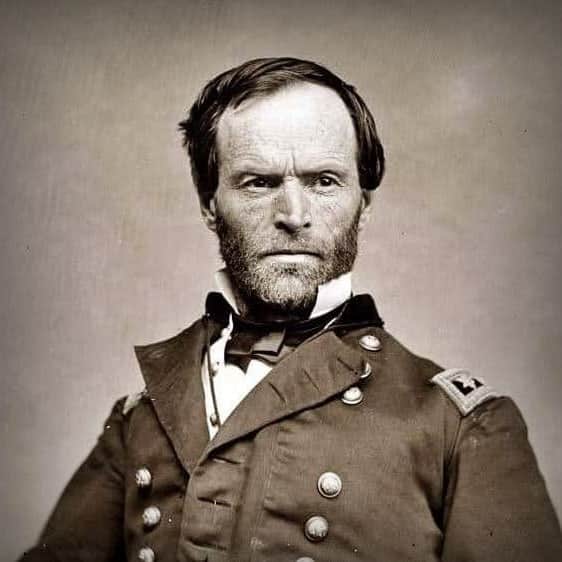
Tour Highlights:
- See the houses of the South’s most prominent generals
- Learn Savannah’s role in the War
- Hear about military strategies
It’s a march through Civil War era Savannah. Hear the strategies of the blue and the gray. See civil war era Savannah, and the houses and buildings involved in the great war between the states.
“…I beg to present to you as a Christmas Gift, the City of Savannah with 150 heavy guns and plenty of ammunition and also about 25,000 bails of cotton…”
So reads Union General William T. Sherman’s telegram to President Lincoln on Dec. 22, 1864 after the occupation of Savannah, ending his army’s infamous “march to the sea.”
For Savannah, the Civil War began in January of 1860 with the seizing of Ft. Pulaski by Georgian troops, preceding the bombardment of Ft. Sumter in Charleston by some three months before the “official” start of the war.
It is the story of the Civil War, pitting brother against brother, which has intrigued Americans since its inception. You’ll hear about military strategies of both sides and learn how Savannahians endured the hardships of the war. A tour for the amateur and buff alike, the Civil War Walk is an intriguing tour through the historic district.
Come tour the Civil War Walk. Make a reservation and experience what Savannah was like during the war.

